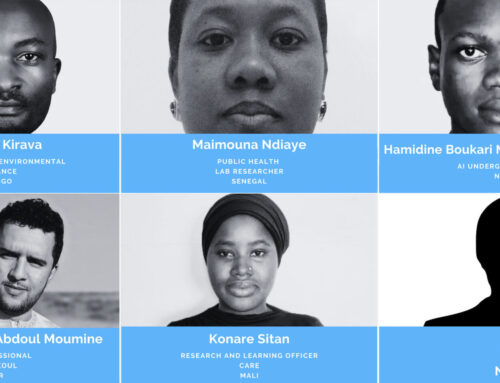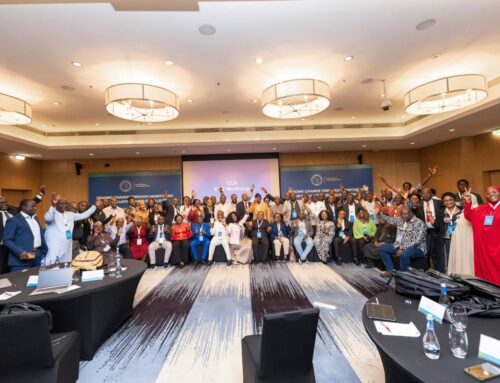Monitoring and Evaluation: Expectation Versus Reality
Monitoring and Evaluation (M&E) is an integral component of any project, program, or intervention. It is also referred to as MEL (Monitoring, Evaluation, and Learning), or even MEAL (Monitoring, Evaluation Accountability, and Learning)/ MEARL (Monitoring, Evaluation Accountability Research, and Learning). I have seen content that refers to this as PMER which stands for Planning Monitoring, Evaluation and Reporting. These terms show how encompassing M&E really is and the various functions it plays before, during, and after the implementation of projects or programs.
Now, to some expectations and realities of M&E.
Expectations Vs. Realities of Monitoring & Evaluation.
Expectation: M&E is rocket science.
Reality: This developmental tool isn’t as complex as the picture depicts. As a fact, you can read about starting a career in M&E by Isese Sor here.
Were you ever a class monitor in early childhood school? Do you recall his or her duties? The class monitor was responsible for collecting and distributing learning materials to other members of the class. He or she was also responsible for taking attendance, writing the names of noisemakers, and cleaning up after classes. As the teacher’s assistant, his or her feedback on ways to improve learning in the class is valued.
This is simply what M&E entails in the development sector:-
Monitoring can simply be defined as the continuous process of collecting and analyzing data to check a program’s efficiency.
For instance, in a project say “Reducing maternal mortality by strengthening delivery services in Primary Healthcare Centers in Abuja Municipal Area Council (AMAC)”, monitoring would include:
- Checking the PHCs registers or attendance books.
- Distributing surveys or questionnaires to pregnant women who visit the PHCs for maternal services.
- Conducting interviews for midwives or skilled birth attendants in the PHCs.
Evaluation, on the other hand, can be simply defined as the process to check whether a program has met its objectives. In the above project, Evaluation would measure the rate of maternal mortality before and after the project to see if the objective was met. It also helps to determine what methodology works well and what could be improved in the intervention.
Expectation: M&E is all about numbers, research, and data.
Reality: Usually M&E is represented by numbers recorded in a spreadsheet and presented in tables and graphs, however, if left for researchers and data analysts, M&E will be too academic and may not report the required information needed to prove that the objective of an intervention was met, or for users to be able to make informed decisions. Note that M&E can take various forms; one size does not fit all. Data can either be quantitative or qualitative or both. The same applies to the report design. The M&E lead ought to be innovative and creative enough to incorporate audio, visuals, and animations depending on the style the “commissioner” of the project prefers.
Expectation: Monitoring is the same as Evaluation
Reality: Often referred to as the “Holy Grail of economic progress”, these terms are different yet complementary and should not be used interchangeably.
Monitoring is the continuous collection of data on specified indicators to assess development intervention (project, programme, or policy), its implementation in relation to activity schedules and expenditure of allocated funds, and its progress and achievements in relation to its objectives. Monitoring provides the information needed to assess the current project situation and assess where it is relative to specified targets and objectives.
Evaluation, on the other hand, is the periodic assessment of the design, implementation, outcomes, and impact of a development intervention. Thus, it assesses the relevance and achievement of the objective; gives information about why the project is or is not achieving its targets and objectives.
Both tools are used synergistically to measure the performance of an intervention, track progress toward achieving desired goals, and demonstrate that systems are in place to support organizations in learning from experience and adaptive management.
Expectation: Monitoring is carried out at the beginning of the project; Evaluation is at the end of the project.
Reality: As the name implies, M&E is Monitoring followed by Evaluation. However, Monitoring and Evaluation should be evident throughout the lifecycle of a project; at the beginning, midterm, end, and as well as after completion.
As Hannah wrote in “The Practice of Monitoring and Evaluation – An Introduction“, here are the various types of Monitoring and Evaluation. If the monitoring process is carried out at the initial stage of the project, it is called Process Monitoring. When the evaluation is carried out at the initial stage, it is called Formative Evaluation.
When Monitoring is done at the end of the project, it is called Results Monitoring, for evaluation, it is called Summative Evaluation. Some evaluations can be carried out years after the project has ended. This is called Ex-post Evaluation.
As a graduate of Biochemistry, one would ask, why M&E? I did not major in Project Management or even International Development. Well, unlike some roles that would require you to have a Bachelor’s or Master’s degree, with some professional development courses, you can grow your career in M&E. And this is my story.
Interning with Cloneshouse Nigeria via the Cloneshouse African Internship Programme was the stepping stone to growing my career in M&E. During this time, I had the privilege of taking the Online Basic M&E and the Result-based M&E courses which have provided me with the required knowledge skills, and practical experience in Monitoring and Evaluation. This experience was indeed a springboard to advancing my career.
In conclusion, the above write-up is aimed at demystifying the popular opinion that M&E is cumbersome. On the contrary, it is very practical and requires the right framework to be implemented. Thus, development experts have to continually develop innovative approaches to Monitoring and Evaluation of projects, programs or interventions.
About the Author
Rachael Okoronkwo is a graduate of Biochemistry, an M&E enthusiast, and a public health advocate. She is passionate about Community Development. Preaching gender equity and inclusion, she seeks to get involved in initiatives that bring about social change and promote sustainable development. Currently, she works with Shedrack Madlion’s Foundation as an administrative assistant and with Cloneshouse Nigeria as an M&E intern in the Fall 2022 Cohort.
External links
https://www.cloneshouse.com/2022/01/25/looking-to-start-a-career-in-monitoring-and-evaluation-6-things-to-consider/
https://www.cloneshouse.com/2022/02/25/the-practice-of-monitoring-and-evaluation-an-introduction/




I’m always available for your concern